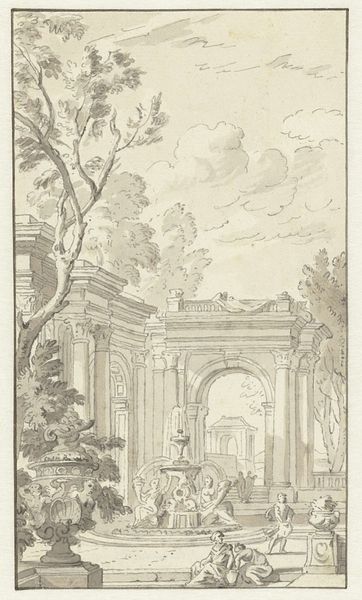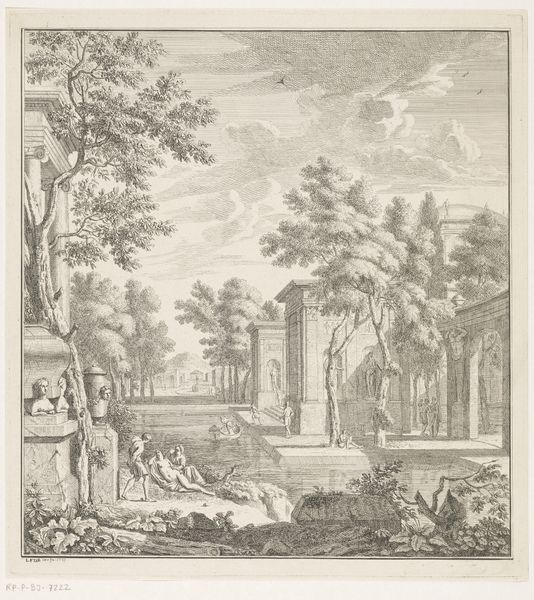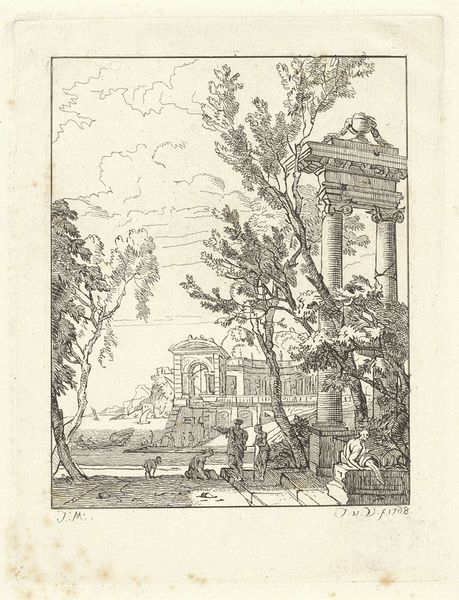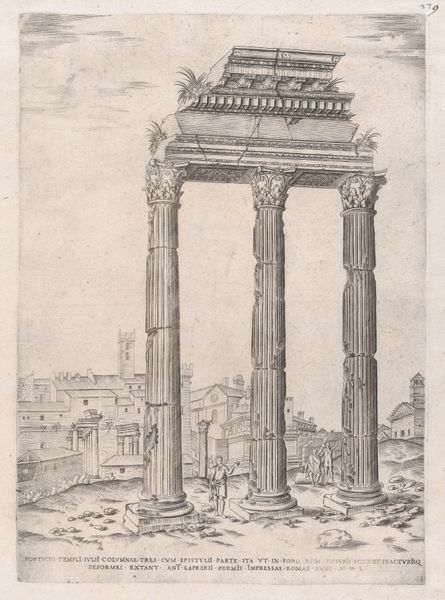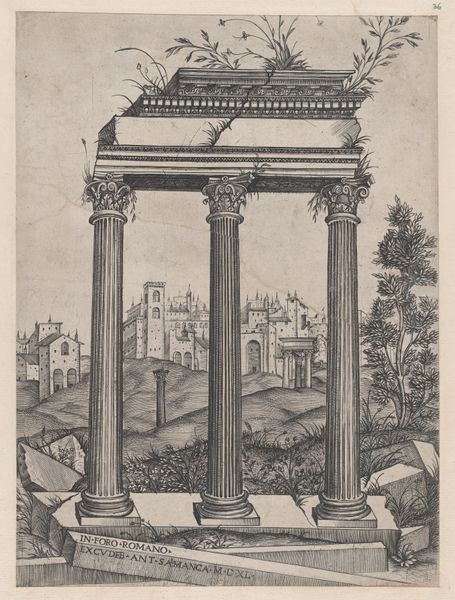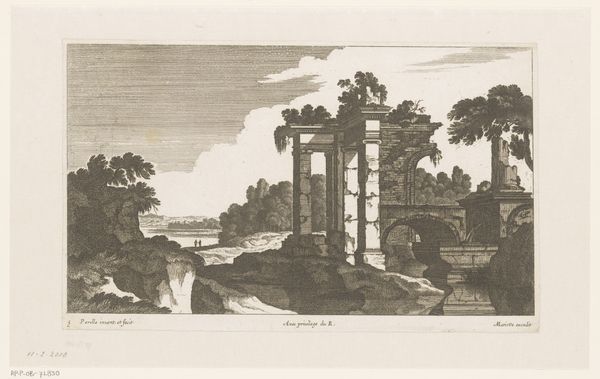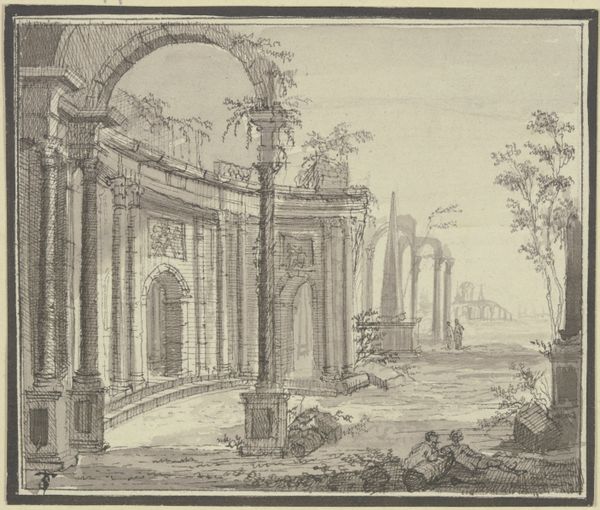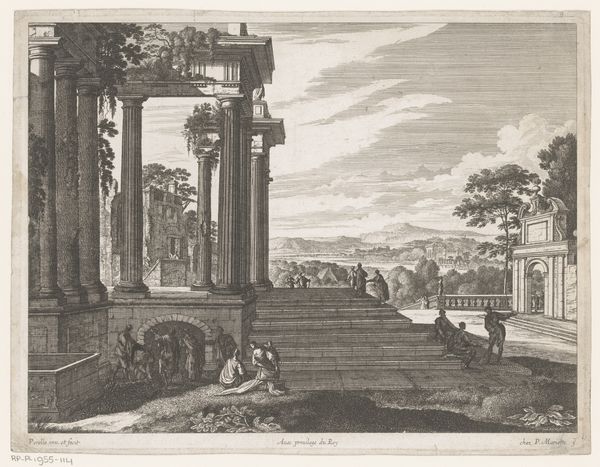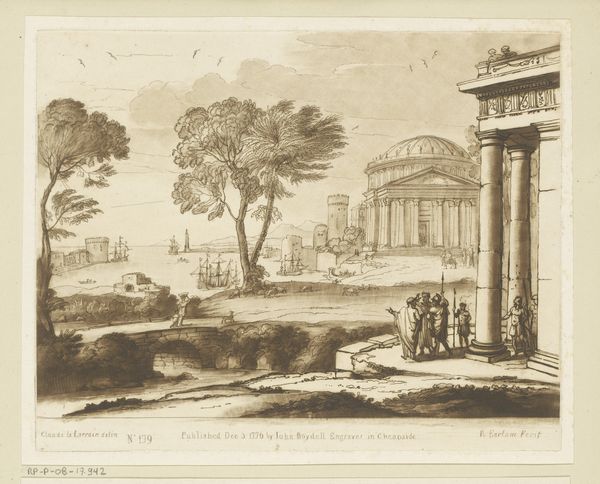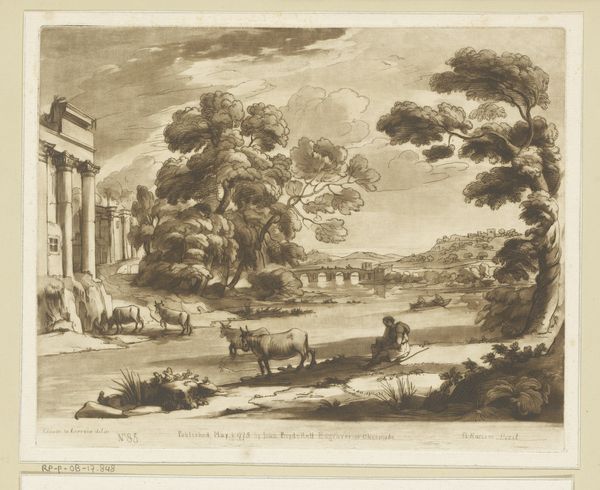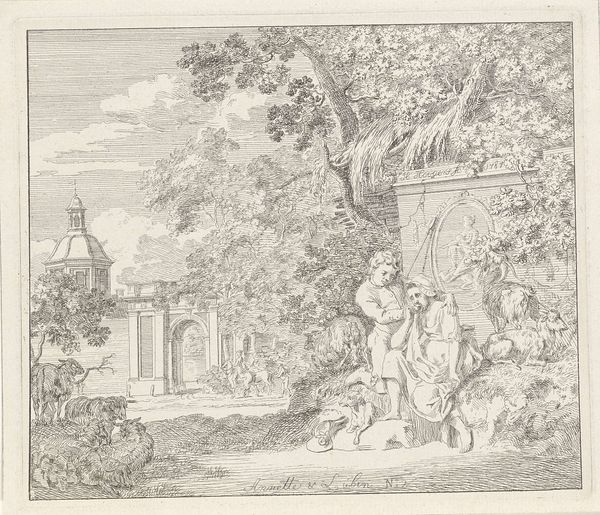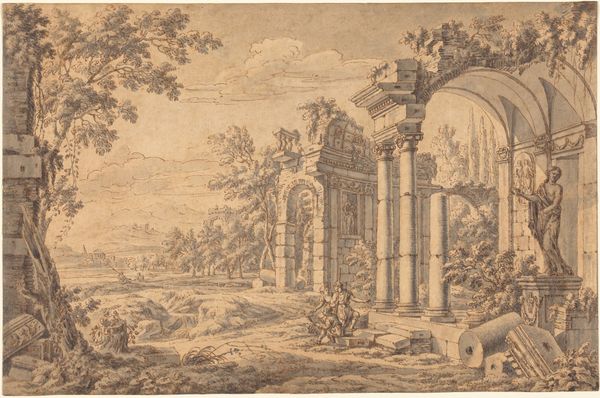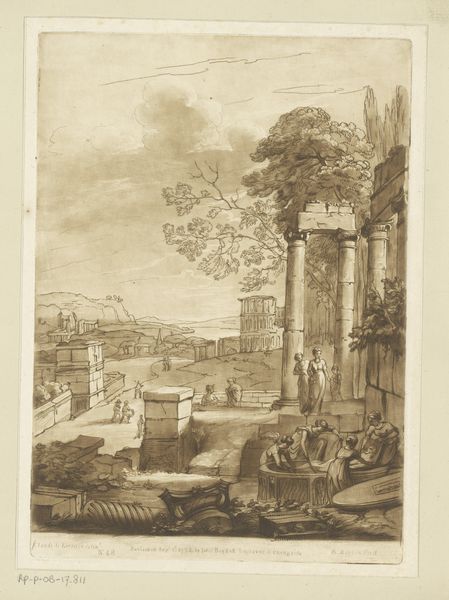
drawing, ink, pen, architecture
#
drawing
#
landscape
#
classical-realism
#
ink
#
pen-ink sketch
#
pen
#
cityscape
#
architecture
Dimensions: height 183 mm, width 106 mm
Copyright: Rijks Museum: Open Domain
Curator: Looking at this delicate pen and ink sketch, formally titled "Ontwerp voor een behangselbeschildering," by Isaac de Moucheron and dating from between 1677 and 1744, I'm immediately struck by the ambition of it as a study for potential wall hangings and large interior design elements. Editor: The muted palette gives the whole composition an ethereal quality, a kind of imagined classical past. The fine lines also seem to disappear when you step away; the materials used for the initial architectural sketches had a different purpose than its afterlife. Curator: Exactly. Moucheron was designing a lifestyle here, projecting aspirations. These weren’t just landscapes; they were aspirational environments. It’s a study in idealized architecture with an attempt to evoke pleasure, but this required labor to create. Pen and ink require expertise and precision; labor goes into these images and gives rise to a false utopia. Editor: And think about where these tapestries would be placed—they’d dominate interior spaces. I'm curious about the division of labor in creating them. Moucheron created the design, but did workshop assistants reproduce his drawings onto the enormous woven works? Or was there no follow-up? Because either way, these utopian images reflect power relations through labor. Curator: Without question. The landscape itself echoes classical themes—see those columns, and the suggestion of a cityscape fading into the distance? He's invoking a kind of historical pedigree and reinforcing power, isn’t he? The commission of such an extravagant item served to display that power publicly. Editor: Although the technique of using fine pen and ink might be common practice now, consider the laborious precision involved in making them appear in harmony when constructing a whole visual narrative, rather than a mere exercise in design. Moucheron doesn’t hide this laborious nature of this process in his architecture; we still see classical themes expressed through drawings made in ink on simple sketches of cityscapes. Curator: I hadn’t thought of it that way, but the materials used are reflective of an emerging merchant society that attempts to mirror the classical world and monarchical tastes. It’s an exciting interplay of societal pressures and design aspirations that come alive in a detailed sketch. Editor: Yes. This "sketch" speaks volumes about how the Dutch, as their empire developed, tried to reimagine the visual past into modern designs by way of landscape tapestries. Curator: It's more than meets the eye: a microcosm of class, labor, and political projection immortalized in ink and available for us today. Editor: Truly a rich tableau, reminding us that these objects weren’t just decorative but were integral parts of building class and power into the public space.
Comments
No comments
Be the first to comment and join the conversation on the ultimate creative platform.
